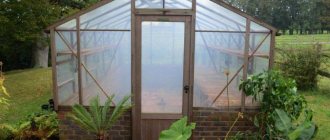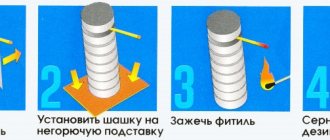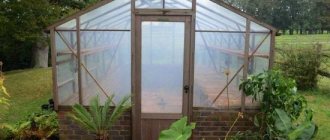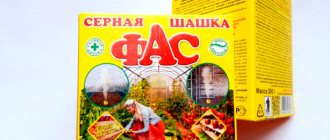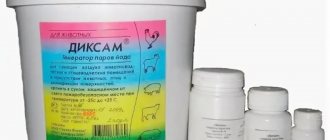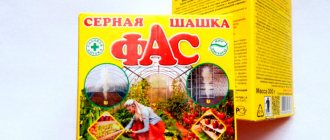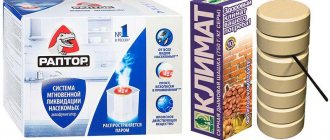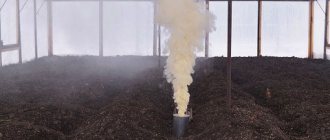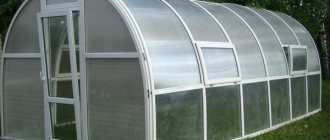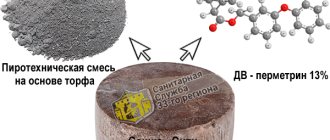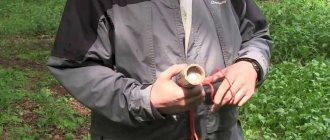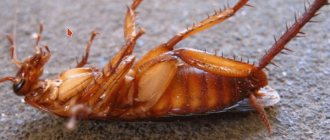In polycarbonate greenhouses, in most cases, a warm and humid environment is formed, which is a tasty morsel for the proliferation of various pests and microorganisms. To avoid an unpleasant situation, disinfection measures must be carried out against pests and diseases. The safest method is smoking with tobacco smoke. The use of tobacco sticks in polycarbonate greenhouses is an absolutely safe and reliable procedure. There will be no negative consequences to the coating and frame, since nicotine acts as an active ingredient. How tobacco is used in gardening will be discussed in our article.
Why is a tobacco shank preferable for a polycarbonate greenhouse?
The noticeable advantages of using tobacco shanks are:
- Easy to use.
- It fights various insects and diseases without any harm to the crops planted in the greenhouse.
- Tobacco smoke has a repellent effect against rodents and bees.
- Smoke penetrates absolutely into all places, even those hard to reach by humans.
- The carbon dioxide released is an excellent natural preservative that has a good effect on plant photosynthesis. The ripening time of the fruit accelerates, the foliage becomes juicy, thick and fleshy. There are no dangerous chemicals in the composition. Nicotine has a detrimental effect only against parasites.
- Using fumigation, you can treat large beds.
The principle of operation of a sulfur bomb
A sulfur block is a set of tablets containing the active substance – sulfur – in an amount of 750 g/kg. When smoldering, the checker releases sulfur dioxide, which effectively kills bacteria, viruses and fungi, as well as harmful insects. The checker has a depressing effect on rodents and scares them away.
The checker consists of 5-10 tablets and is designed to treat a certain volume of the room. For processing, take the required number of tablets, set them on fire with a wick and leave the checker to smolder in a tightly closed greenhouse. This produces a large volume of smoke that fills the structure.
Sulfur checker
Smoke easily penetrates into hard-to-reach places: joints of frame elements, polycarbonate, cracks in the foundation and fences of beds - where pests and pathogens accumulate. When combined with vapors and drops of moisture, the anhydride forms sulfurous acid, which gives an additional disinfecting effect and disinfects the soil and walls of the greenhouse.
A special wick comes complete with smoke bombs
In what cases is a tobacco smoke bomb used?
If you notice that your crops that you are growing in a greenhouse have begun to grow and develop poorly, and also that the leaves are beginning to be affected by various diseases and pests, then this is a clear signal that you need to carry out tobacco treatment. Polycarbonate greenhouses especially need such treatment, since it is in them that the air humidity can be very high, which is a reason for the proliferation of pests and diseases. Here are the insects that tobacco sticks are good to use against:
- Aphid.
- Medyanitsa.
- Spider mite.
- Ground fleas.
- Butterfly
- Whitefly.
- Thrips.
- Late blight.
It is also possible to use tobacco checkers as a preventive measure:
- for routine disinfection of the greenhouse,
- to stimulate the growth of vegetable crops,
- in order to increase the safety of fruits.
The nicotine contained in drafts does not cause any harm to plants at all. Certain crops (potatoes, eggplant, peppers and tomatoes) contain small amounts of nicotine. Tobacco smoke has a short shelf life. Insect poisoning occurs only at the time of the procedure. It is for this reason that fumigation must be carried out more than once.
Range
Smoke tobacco bombs on the market for agrochemicals and household chemicals can be divided into 3 groups:
- Sanitation (disinfecting).
- Repellent (repellent), with and without pesticide activity (gentle).
- Warehouses (for vegetable stores), in addition to sanitation, prevent the germination and withering of stored agricultural products. Only the Hephaestus Storage described above is currently on sale.
Sanitation
This group is dominated by the tobacco saber Hephaestus. The inventor himself talks about the “simple” soda-free drink, the first to find demand, in the story above. Hephaestus Storage also goes on sale from the same manufacturer (see above), and in addition:
Hephaestus Phytophthora. Fungicidal activity against late blight on potatoes and tomatoes is declared. It performed well in vegetable storehouses (this checker is a kind of predecessor of Hephaestus Storage), but in greenhouses it can oppress and burn plants, especially delicate ones: cucumbers, dill, etc. For a description, see the video:
Video: about the tobacco checker Fitoftornik
Hephaestus 2 – modification for greenhouse farming. A stimulating effect on plants, increased fungicidal and acaricidal activity are declared: against spider mites, powdery mildew, downy mildew (downy mildew), sooty fungi (black rot), gray rot, rust fungi, anthracnose and septoria, as well as repellent and rodenticidal activity ( drives away rodents). It has not yet been fully tested in practice. See video description here:
Video: about the tobacco checker Hephaestus 2
In addition to Hephaestus, Vulcan occupies a significant share of the market for sanitary tobacco drafts. The consumer needs to know the following about these checkers:
- The manufacturer does not declare the presence of soda in the composition, but they smoke thickly, like soda, i.e. damage to plants from excess carbon dioxide is possible;
- Sulfur bombs from the same manufacturer are sold under the same name (“Vulcan”), in outwardly similar packaging - don’t make a mistake when buying!
Repellent
Tobacco drafts of this group are divided into two subgroups: household and household. The first ones are represented most of all by the mole rattles Krotonol, Nutcracker, etc. Their effectiveness increases significantly if a few days before the fumigation of the molehills, a mole rattle (you can make a homemade one) is installed on the site. Well, imagine: you rented an apartment, you barely moved in, and the neighbors upstairs are moving furniture around the clock, and tobacco smoke is pouring out of the ventilation? Scandal, seek the truth, or break the lease and move out? The question is rhetorical.
Household tobacco repellent sticks are also a good find. The fact is that conventional pesticide fumigators for residential premises do not drive out all mosquitoes. More precisely, mosquitoes: the blood necessary for the formation of eggs is drunk by females, and male mosquitoes are vegetarians with a sweet tooth, feeding exclusively on flower nectar and pollen.
But it doesn’t matter how important it is which mosquito sex is more bloodthirsty. But it is important that some of the mosquitoes from fumigation do not fly away out of the windows, but hide in places where the fumigant penetrates slowly and poorly
Then at night, when the release of the drug DV weakens, it flies out on a drinking binge. Increasing the concentration of the pesticide will harm people. And a tobacco bomb with a repellent solves the problem: the inhabitants of the room are removed from it (not moved out!) for 1-2 hours before treatment. During this time, nicotine will kill all the mosquitoes, no matter where they hide. Then half an hour of ventilation - people and animals can return and sleep peacefully: the smell of a non-toxic armmatic repellent will last until the morning, and mosquitoes will fly around open windows ten times a day, that’s why the repellent is used. The most popular checkers in this segment are Muhoyar and Quiet Evening (for indoors), and Smoker (for open air and tents).
Types of tobacco checkers
In stores you can find several varieties of tobacco sticks, which we will discuss in more detail below. All these types of bombs have proven themselves to be safe for crops, unlike sulfur bombs.
In order for there to be any positive effect, you must strictly follow the instructions of the drug. If it is not there, then this product is uncertified.
Tobacco checker Hephaestus
The Hephaestus tobacco bomb contains tobacco crumbs and an incendiary mixture. The packaging has a cylindrical shape, the weight of the package can be 160 or 250 g. Well suited for combating various types of pests: spider mites, aphids, copperheads. It has a stimulating effect on the growth and development of the plant.
If the drug is opened, it can quickly lose its properties. If you have any substance left, it is best to store it away from flammable objects. The storage room must be dry, the air temperature must be +20...+25 degrees. If, for example, the area of your greenhouse is about 25 square meters. m, then it will be enough for you to purchase 1 piece.
Tobacco checker Phytophthora
This type of tobacco stick has proven itself well against fungal diseases: powdery mildew, late blight, rust and other types of fungi. The composition of the tobacco checker includes: tobacco chips, an igniter, a combustion stabilizer, and a large amount of sodium bicarbonate, which has destructive properties in the fight against fungi.
The drug has a cylindrical shape, weighs about 220g. 1 package of the drug will be enough to treat a greenhouse with an area of up to 35 square meters. m. The procedure of fumigation with the drug can be repeated 2 days after the first treatment. If the packaging has been damaged, the drug has the property of self-destruction.
Tobacco checker Vulcan
This type of tobacco stick is well suited for the fight against late blight, as well as other pests of garden crops. It is very popular among summer residents. The drug has a cylindrical shape. The composition includes: tobacco dust, ignition mixture, cardboard membranes.
If you are going to use the drug to stimulate plant growth, then 1 pc. The drug will be enough to treat 50 square meters. m plot. If you are going to carry out treatment against pests, then for 30 square meters. m 1 pc. drug. Insects do not get used to the drug.
Gas protection
The ideal protection against toxic smoke is a gas mask. But it is allowed to replace it with a respirator. It is also necessary to wear tight-fitting glasses, which are often prescribed for use in small rooms. Ideally, you should have separate protective clothing, such as a thick coat or gown, gloves and a hat.
It is better to carry out the processing together. During fumigation, it is forbidden to eat or drink, and animals, children and other people should be kept as far away as possible. After setting fire, you should immediately leave the room, as smoke vapors are extremely toxic. In the case when several checkers need to be set on fire at the same time, movement begins from the furthest one, gradually moving towards the exit, and so quickly as to leave before the smoke begins.
How to understand that you have been poisoned by a smoke bomb
There are several signs that can tell you that you have been exposed to sulfur smoke. Among them:
- dizziness;
- headache;
- wheezing, difficulty breathing, suffocating cough;
- pain in the eyes and lacrimation;
- swelling and mucus from the nasopharynx;
- In case of severe poisoning, nosebleeds are observed.
As soon as you determine that a person has been poisoned by sulfur gas, he should be immediately taken out of the place of smoke and contact a toxicologist as quickly as possible. In case of acute signs of poisoning, you must call an ambulance.
Important: smoke bombs should be stored in their original original packaging, in a place inaccessible to children, animals and open flames.
How to properly use a tobacco shank in a greenhouse
Before processing with a tobacco stick, everything in the greenhouse must be thoroughly cleaned, namely:
- We are cleaning the top layer of soil, removing foliage and dead areas of plants.
- We are dismantling the racks.
- Remove all unnecessary items from the greenhouse: boxes, boxes, containers.
- The greenhouse covering needs to be cleaned with a soap solution. It is especially necessary to wash joints and seams. They may contain various microorganisms and pest larvae.
- Loosen the soil so that combustion products can more easily penetrate the soil. At the same time, various parasites and mold will also be destroyed.
- Seal the greenhouse, paying special attention to cracks, gaps, and joints.
- Walls and soil need light moisture. A humid environment is suitable for better smoldering. Arrange the brick stands evenly.
If you plan to use only 1 pc. drug, you can place it exactly in the center. To correctly calculate how many checkers you will need, you need to take into account its size and the purpose of their use.
What it is
A tobacco smoke bomb consists of:
- Tobacco crumb: when smoldering, it emits, in addition to the usual combustion products, nicotine vapor: (0.1-0.2)% by volume relative to the total volume of smoke.
- Combustion stabilizer. Its composition has not been made public, but most likely it is the same saltpeter that is added to cigarettes so that they do not go out when they are not “pulled.”
- Baking powder. Non-flammable, non-decomposing when heated, chemically and biologically neutral mineral powders.
- Ignition wick.
- Sodium bicarbonate (baking soda), not in all samples. When heated, sodium bicarbonate releases a large amount of carbon dioxide (see figure), as a result of which it is used, together with ammonium carbonate, in dry fire extinguishing systems (for example, as a filler for powder fire extinguishers).
- Additional substances (rarely). Additional additives may include flavorings, repellents (pest repellents), evaporating pesticides, etc.
How it works
Nicotine is a well-known insecticidal agent. A class of synthetic pesticides, neonicotinoids, has been created based on nicotine. Pest resistance to nicotine has not been observed: tobacco dust has long been used to protect garden crops. Fumigation with nicotine does not cause its accumulation in fruits, because In the gas phase, this substance does not have systemic activity in plants.
Fumigation of a greenhouse with tobacco smoke
The second most important active ingredient (AI) in tobacco smoke is carbon dioxide CO2 (carbon dioxide). It is precisely to increase its concentration in the smoke that sodium hydroxide is introduced
At elevated concentrations in the atmosphere (more than 0.6% by volume), carbon dioxide becomes toxic to heterotrophic organisms (animals, fungi), even if there is enough oxygen for breathing. This is why the concentration of CO2 in the air is so carefully monitored by submariners and astronauts. A further increase in CO2 concentration (up to several%) has a depressing effect on plants.
Additional substances either act as pesticides, enhancing the effect of nicotine, or repel pests with their smell. In addition, the products of tobacco combustion contain a large amount of water vapor and active residues (radicals) of organic compounds. Reacting with air moisture, they can produce quite complex compounds, for example, vapors of organic acids.
The most significant (and undesirable) byproduct of tobacco combustion is carbon monoxide CO (carbon monoxide). Its formation is not excluded during the fumigation process, and if a powerful bomb (see below) with soda “to be sure” is burned in a small room, it is almost inevitable. Carbon monoxide is good at killing arachnids (arachnids), for example, spider mites, and phytopathogenic fungi, but it is almost as destructive for plants as it is for animals.
What time to choose
It is best to disinfect greenhouses in the spring and autumn. To improve the first treatment, it is best to repeat the fumigation procedure 4-5 days after the first treatment.
If you are going to plant vegetables in the spring, then the first treatment with tobacco is best done 3 weeks before planting.
Autumn processing can be carried out after you have harvested the crop. After the procedure is carried out, the room will need to be well ventilated and closed until the next season.
It is possible to use tobacco sticks during the period of active plant growth. There is no need to remove vegetable crops from the greenhouse; the smoke will not cause any harm to the plants. It is best to carry out the fumigation procedure in the evening, in cloudy or cool times, so that the vegetables cannot die from the stuffiness.
Precautionary measures
Sulfur dioxide is very toxic to humans. When working with sulfur bombs, you need to wear personal protective equipment. These include safety glasses, gloves, thick clothing and a gas mask. If you don’t have a gas mask, then at least a respirator. You should not stay inside the greenhouse while gas is being released. This is life-threatening.
You must follow the included instructions exactly
Use the sulfur bomb carefully in the presence of a metal greenhouse frame. Sulfur gas forms an acid that can corrode metal. If the metal frame is not painted, then an anti-corrosion agent can be used.
Sulfur bombs are used mainly in the fall to disinfect various rooms. At lower temperatures, sulfur penetrates better into the soil and disinfects surfaces. Treatment is carried out no later than 5 days before storing the crop for storage.
How to properly light a smoke bomb in a greenhouse
Setting fire to a tobacco stick must be carried out on the street. You need to install it on a pedestal of bricks, light the wick and move back a little so that the flames cannot touch you and your clothes. After about 15-20 seconds it will go out and the desired fumigation process will begin. After this, it can be sent to the greenhouse.
Checkers must be placed around the perimeter of the room, do not forget to close the door tightly. The smoking process can continue for several hours. After completing the procedure, the room should be well ventilated and after a few days the fumigation procedure should be repeated.
Many say that the use of drugs has a detrimental effect on insects after 1 treatment, and after the 2nd procedure the larvae themselves begin to die. There is no effect of smoke on eggs.
Fumigation procedure
- Remove the checker and wick from the packaging.
- Place the required number of checkers vertically on stands made of non-flammable material.
- Place the checkers in the room being treated at a distance of at least 0.5 m from flammable objects.
- Close transoms, sashes, windows. Eliminate gaps between frames, doors, cellar lids - seal with damp cloth, felt, foam rubber or other sealing agents.
- For a SULFUR checker - put the wick on the corner of the checker and set it on fire, making sure that the smoldering process begins (a dark spot should form at the point of contact of the hot wick and the sulfur bomb), quickly leave the room, closing the door tightly.
Application of sulfur smoke bomb
- For a TOBACCO stick - without removing the cardboard membranes, light the stick, after ignition, quickly remove your hands, since the combustion process immediately begins with abundant release of smoke without fire.
Use of tobacco smoke bomb
- Fumigation (fumigation with smoke) is carried out within 24-36 hours. The smoke easily penetrates into all corners of the room being treated, thereby ensuring disinfection as effectively as possible.
- After fumigation is completed, the room is ventilated for about 1-2 days until the specific odors completely disappear.
Compliance with safety measures
The use of tobacco cones is absolutely harmless both for people and plants, and for the polycarbonate greenhouse itself. But you still need to take certain precautions:
- If you are going to use several pieces of tobacco sticks, then you must wear safety glasses to protect the mucous membrane of your eyes.
- To protect exposed parts of your body, it is best to wear long sleeves.
- When you install the checker, you need to hold your breath for a while.
- The room must be airtight so that the smoke does not escape outside the greenhouse.
- You should not be inside the greenhouse during the fumigation procedure.
- After the burning ends, you cannot enter the greenhouse for several hours. Dissipation of carbon dioxide must occur.
Reviews
Olga Polyakova, 40 years old, Alexandrov We used a Hephaestus smoke bomb, we did everything according to the instructions, tobacco smoke killed all the pests, and we harvested a large crop.
Svetlana Goryunova, 51 years old, Vladimir I tried fumigation with different means, but most of all I appreciated “Late blight”. The cucumber leaves were affected by some kind of disease, after several fumigation procedures they began to turn green and the plant began to recover. The fruits were not damaged by smoke. Now every year I carry out disinfection with “Late blight” - in spring and autumn.
Pavel Rybin, 59 years old, Suzdal I always smoke Hephaestus. In my opinion, this is the best remedy for pests and late blight. The main thing is not to enter the greenhouse until the smoke has completely cleared. I don’t use sulfur bombs, because I consider them harmful to plants and human health.
We carry out a set of works after processing the greenhouse using a tobacco checker
If you use the tobacco sticks that we previously reviewed, then there is no need to carry out any specific work. You just need to ventilate the greenhouse well so that all the smoke and smell disappear completely. Then you can go about your normal business there. If you need to enter it before the burning ends, do not forget about the protective mask.
Tobacco can be used throughout the season. It does not contain chemicals. The checker is easy to use. It is good at combating many pests and diseases that can negatively affect the development of vegetable crops. It is important to remember that when using tobacco pellets you must follow safety precautions and follow all operating instructions
The benefits and harms of sulfur bombs
Before you start treating a greenhouse with a sulfur bomb, it is necessary to evaluate its benefits and harm to the structure itself, the soil and the plants.
Advantages of sulfur bomb:
- effective against fungus and mold, bacteria and harmful insects;
- has high penetrating ability;
- economical;
- easy to use.
But there are also disadvantages that should also be kept in mind.
- The toxicity of sulfur bombs is extremely high, so its use requires compliance with safety rules.
Sulfur smoke bombs are very toxic
- Sulfur dioxide has a destructive effect on unprotected metal frame parts.
- After repeated treatments, polycarbonate becomes cloudy and becomes covered with microcracks.
- The acid formed as a result of the reaction of smoke with water kills not only harmful, but also beneficial microorganisms, worsening soil fertility.
- The effect of the sulfur bomb does not extend to deep layers of soil.
- Treatment cannot be carried out during the growing season and less than two weeks before planting.
Important! When using a sulfur bomb, you must strictly follow safety precautions: the bomb is a fire hazard, and its smoke is poisonous!
When treating a greenhouse with a sulfur bomb, it is important to follow safety precautions
Considering all the disadvantages and difficulties in using sulfur bombs, before using it it is necessary to evaluate the feasibility of processing. Experienced gardeners advise using a sulfur bomb in the following cases.
- Plants of the same species were grown in a greenhouse for several years in a row, having common pests and diseases.
- During the season, outbreaks of fungal and bacterial diseases with a large area of damage were observed in the greenhouse or in its immediate vicinity.
- Insect pests were noticed on the plants, and the fight against them using folk remedies or systemic insecticides turned out to be ineffective.
- The plants in the greenhouse are infected with spider mites - they are difficult to remove using conventional means.
In other cases, it is better to carry out preventive disinfection of greenhouses using biological products - they do not have a harmful effect on the soil and the structure of the greenhouse. You can also use other types of checkers with fungicidal and insecticidal effects.
Prices for sulfur bombs
sulfur bombs
Soil preparation
The greenhouse creates ideal conditions not only for the growth of plants (including weeds), but also for various pests that can ruin the standing crop if they are not dealt with. Treatment of the greenhouse in the fall against pests and diseases should be comprehensive. The use of chemicals - various insecticides during the growing season is not a very good idea. Chemicals that accumulate in plants eventually enter our bodies.
Therefore, special attention should be paid to disinfection and other soil treatment in the greenhouse in the fall.
Soil replacement
This is a rather labor-intensive and expensive process, but after it the number of pests is reduced by several orders of magnitude. It is recommended to carry out such a procedure as preparing the soil in a greenhouse in the fall, with a complete replacement of the fertile layer, at least once every three years. The soil is removed to a depth of 7-10 cm. Then peat, humus (manure), sand and ash are added in its place, the proportions vary depending on the presence of a particular ingredient, but rarely exceed 1 bucket per 1 m2 of soil. Tilling the soil in a greenhouse in the fall may include fluffing, for heavy and oily soils, using sawdust. However, with this method you need to be careful and, if possible, not use sawdust from coniferous wood (spruce, pine, larch) and wood species with a large amount of tannins (oak, walnut).
The resulting mixture is dug up. Distribute evenly over planting areas and cover with a thick layer of straw or fallen leaves on top. After snow falls in winter, you need to throw some of it into the greenhouse yourself with a shovel (a layer of 15-20 cm) to prevent deep freezing of the soil and provide the ground with the necessary moisture in the spring. Some gardeners additionally water the enriched soil mixture with a weak solution of potassium permanganate before adding fertilizers.
A thick layer of fallen leaves will help keep you warm
Soil infected with pests and diseases does not need to be thrown away, but rather treated. How to treat the soil in a greenhouse in the fall in order to effectively disinfect it without resorting to strong chemicals. To do this, a pile is formed with an area of 1-2 m2 and a layer thickness of 20 cm. When constructing it, each layer is generously sprinkled with lime at the rate of 250 g per 1 m2. It remains in this state for the entire next year, having frozen out over the winter, the pile will need to be dug up again next fall and used after the second winter.
Soil fertilization
How to fertilize the soil in a greenhouse in the fall depends not only on the type of soil, but also what crops are planned to be planted in the spring. To achieve the highest yield, not only special means are used, but also special methods for processing perennial plants:
- Strawberry. After the last harvest, at the end of August, all the greens are mowed down so that the top buds remain intact. The bed is watered abundantly and the soil is loosened. Potash and superphosphate fertilizers are applied in the proportions recommended by the manufacturer. All this is sprinkled with a small layer of fertile soil so that the new shoots do not dry out. Before the onset of cold weather, no later than October, the strawberry roots are earthed up and covered with peat. In winter, be sure to pretend to be a thick layer of snow to prevent freezing.
- Tomatoes. One of the most common greenhouse crops. They are very demanding on the quality of the soil and the composition of fertilizers. For tomatoes, soil preparation in a greenhouse in the fall consists of applying organic, chemical or combined fertilizers, which must necessarily contain:
- Manganese – promotes faster ripening of fruits;
- Copper, boron – stimulate flowering and abundant fruiting;
- Potassium, magnesium, phosphorus, nitrogen - contribute to the rapid growth of the plant.
- Cucumbers. The most common “resident” of greenhouses. There are many varieties designed for growing in greenhouses. However, processing a polycarbonate greenhouse in the fall to plant cucumbers in it has its own specifics. First of all, you need to check the acidity of the soil. If the acidity is more than 6.5-7 pH in the fall, it is necessary to lim the soil. Also in the fall, the soil is fertilized with the following specialized mixture:
- Potassium salt – 10-25 g;
- Ammonium sulfate – 10-25g;
- Ammonium nitrate up to 25 g.
Important! There is a very simple way to test soil acidity at home. You need to pour a handful of dry soil with simple 9% table vinegar
If a reaction begins with the release of gas, then there is enough lime in the soil and it is neutral.
Determination of soil acidity using 9% vinegar, reaction to neutral soil
